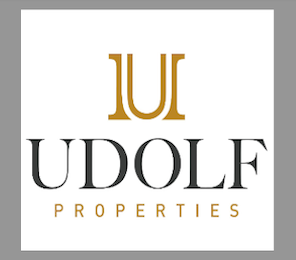
By Rabbi Shmuel Reichman
There is a principle in Jewish thought that many of the most fundamental aspects of Torah are expressed in the most deceptively simple manner. Our job is to delve into these seemingly mundane topics and reveal their inner depth and meaning. One such example is Moshe’s mateh – his staff. It plays a pivotal role within the story of the Exodus from Egypt, and yet how often do we ponder its paramount significance?
The mateh first appears at the burning bush, where it turns into a snake (Shemos 4:3). When Moshe confronts Pharaoh’s court, the mateh once again turns into a snake (Shemos 7:12). In Jewish thought, the snake represents evil and the yetzer hara (evil inclination), so it would appear as if the mateh represents evil.
However, the mateh is also used to perform all the plagues in Egypt (Shemos 4:17), as well as the splitting of the Red Sea – the pinnacle of the miraculous, transcendent experience of the exodus from Egypt. Additionally, the midrash explains that Hashem’s name was crystalized into the mateh itself. It therefore appears that the mateh is a very spiritual object, the exact opposite of the evil it seems to represent. What, then, is the true nature of the mateh?
In order to understand the meaning of the mateh, we must first develop a fundamental principle. The Maharal explains that nothing in the physical world is objectively good or evil. Rather everything has the potential to be used for either good or evil. The choice is solely up to us. For example: Electricity is neither good nor bad. An outlet can be used to charge your appliances, but it can also give you an electric shock.
Everything in this world is merely potential waiting to be used. Evil, therefore, is the misuse of potential. Evil is the breakdown and corruption of good. Thus, Hebrew word for evil is rah, which means brokenness or fragmentation.
Hashem created the world in this way so that human beings can have free will. We get to choose whether to use things for their true purpose, actualizing their potential, or to misuse them, getting pulled into the clutches of evil.
And so, the mateh is neither good nor evil. Its nature depends solely on the one who holds it. It can represent the snake of evil, but it can also be used for spirituality, to carry out Hashem’s mission in this world. When in the form of evil, it causes Moshe to run away in abject terror, but when in the form of good, it enables the world to witness Hashem’s miracles. While this alone is an essential point, we can develop this theme even further.
The midrash compares Egypt and the snake to a “bent path,” while the mateh symbolizes a straight path. What is the deeper meaning behind the concepts of the bent and straight paths?
Imagine you are walking along a straight path. At any point along the path, if you turn around, you can see exactly where you came from. However, if the path suddenly takes a sharp turn, bending off its straight course, then if you turn around, you can no longer see the starting point of your journey. The same is true of the physical world in which we live. Originally, the physical world faithfully and perfectly reflected its spiritual root. When you looked around, you saw and experienced Hashem, and you knew that He created the world; it was like looking back down a straight path. However, after Adam sinned, the entire world fell. The world became a bent path, and it is no longer clear where we come from. When we look around, we no longer see a universe that clearly and loyally reflects its Godliness.
The snake bends and slithers, representing a bent path, a world of evil and brokenness, where you can no longer see Hashem. The mateh represents a straight path, through which you trace yourself back to your source.
When Moshe first encounters Hashem, he is told to thrust the mateh to the ground, where it then transforms into a snake. When something is thrust to the ground, low and distant from its transcendent source, it becomes bent, it becomes evil. But when Moshe lifted it up, towards the sky, tracing it back to its source, straightening the bent path, it became a mateh, a source of good.
Everything in our world is potential, having the ability to be used for good or for evil. The choice is ours. Just as we choose which of the two wolves to feed, we choose how to use the potential in this world. The pull and temptation of negative desire can be overwhelming, but the pursuit of truth, of the straight path, must prevail. We each get to choose who we will become. Let us be inspired to straighten the bent path, build clarity from confusion, oneness from brokenness, and bring the world to its ultimate destination.
Rabbi Shmuel Reichman is an author, educator, and coach who has lectured internationally on topics of Jewish thought and Jewish medical ethics. Contact him at ShmuelReichman.com.








 Southern New England Jewish Ledger
Southern New England Jewish Ledger








